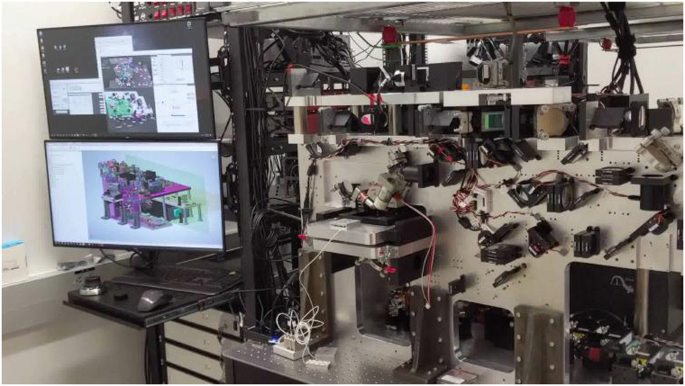MOSAIC Microscope Generates 0.5 Petabytes Imaging Entire Mouse Olfactory Bulb

A collaborative team of researchers, spearheaded by Nobel laureate Eric Betzig and senior authors Gokul Upadhyayula and Rui Gao, has successfully completed an unprecedented imaging project of the entire mouse olfactory bulb. Co-first authors Wei Wang from UIC and Gaoxiang Liu and Xiongtao Ruan from UC Berkeley were also instrumental in the effort. This monumental undertaking, announced by Betzig, involved capturing axons and myelin sheaths in both wild-type and diseased states, leveraging the advanced MOSAIC microscope and PetaKit5D data processing system to generate approximately 0.5 petabytes of raw data.
The MOSAIC microscope, a modular and multimodal imaging platform, integrates twelve distinct imaging modes with adaptive optics. Developed by the Wesley R. Legant and Srigokul Upadhyayula labs with significant contributions from Betzig, the system is designed for high-resolution, high-throughput imaging, capable of producing data at rates up to 4 terabytes per hour. Its companion, the PetaKit5D system, provides the necessary computational infrastructure to manage and process these immense datasets, crucial for modern microscopy.
The technical demands of the project were substantial, with Betzig detailing, "> peak acquisition rates of ~2 tera-voxels per hour over 10 days using nine rounds of interleaved on-block volumetric LLSM imaging and photoslicing." This specific methodology, likely employing a form of Lattice Light-Sheet Microscopy (LLSM) pioneered by Betzig, allowed for the comprehensive three-dimensional visualization of the intricate neural structures within the olfactory bulb. Imaging the entire organ in such detail, particularly in diseased states, offers critical insights into neural pathways and pathologies.
This achievement not only demonstrates the cutting-edge capabilities of the MOSAIC microscope and PetaKit5D but also validates their robustness for extreme scientific challenges. Betzig explicitly noted, "> This certainly stress-tested our imaging and data processing pipelines to the utmost," highlighting the systems' successful performance under rigorous conditions. The ability to image and process petabyte-scale data sets a new benchmark for understanding complex biological systems.
The implications for neuroscience are profound, as detailed visualization of axons and myelin sheaths is fundamental to understanding neural connectivity, signal transmission, and the mechanisms underlying neurodegenerative diseases. This breakthrough paves the way for deeper investigations into brain function and disease progression, enabled by tools that can now capture biological complexity at an unprecedented scale and resolution. The collaborative nature of this project, involving multiple institutions and leading experts, underscores the interdisciplinary efforts driving advancements in biological imaging.